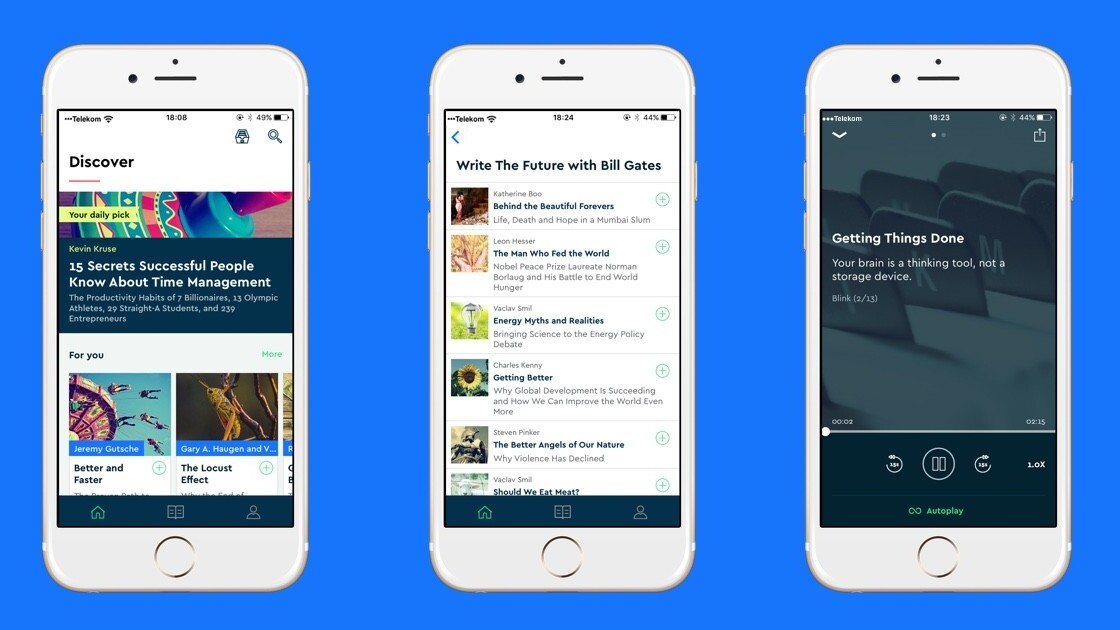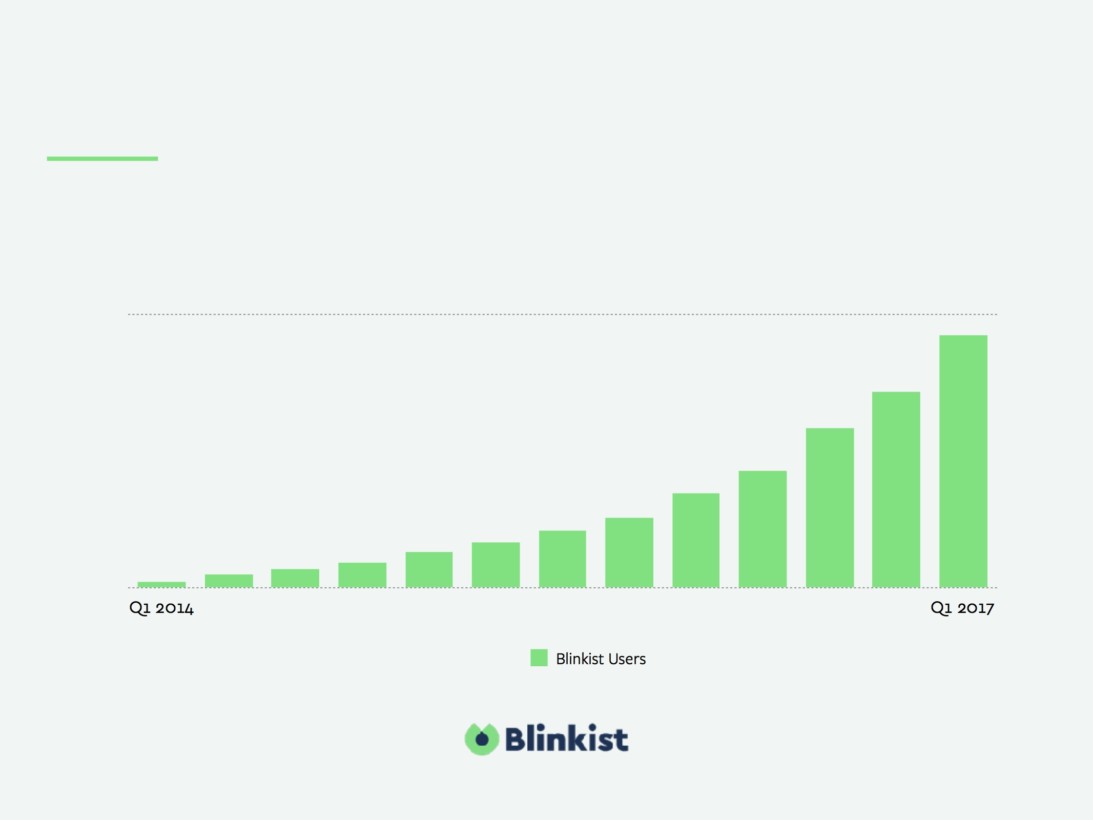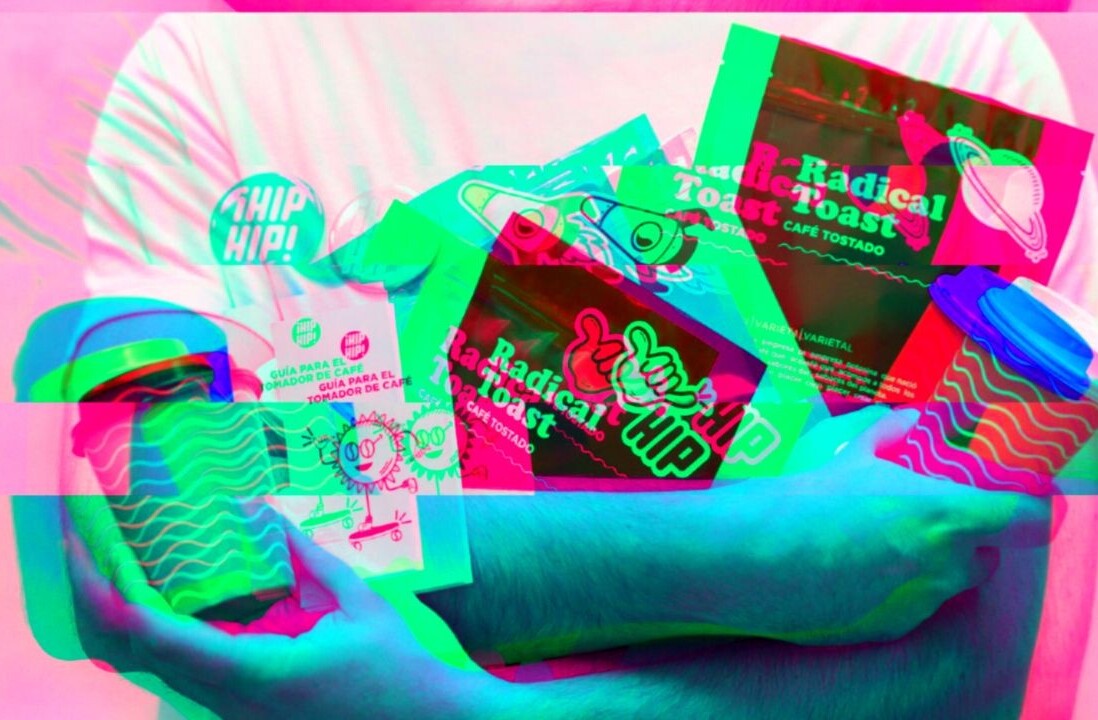
Growth Story is a new four-question format we’re doing about startups finding and influencing a defining metric that helped really grow their company.
This week the CEO and co-founder of Blinkist, Holger Seim, shares valuable insights into growing a subscription-based B2C service. Blinkist is a service that lets users read or listen to the key lessons from nonfiction books in 15 min or less.
It’s raised some considerable investments and has been growing steadily since their switch to a subscription model end of 2013. Now, they’re one of the fastest growing startups of Europe, so we asked all about their secret to achieving fast growth.
The company
“Blinkist is all about inspiring people to keep learning. In our age of information overload, it’s getting harder and harder to fit learning into everyday life. We want to make it easier for people to do something more meaningful with their time when they consume information.
The way we do this is to take non-fiction books, which are one of the most important sources of knowledge, and condense their key insights into a format that people can easily read or listen to on the go. We call the format ‘blinks’, because you can read or listen to it in the blink of an eye.
Basically, one blink represents a key message from a book and can be read or listened to in one and a half minutes. One book usually consists of 10 blinks, so you can go through a book in 10 to 15 minutes.
The two core benefits that we bring to users are: We lower the barrier to get started at all and inspire people to read more books, but also help them learn something new by just reading the blinks in 15 minutes.
Instead of having to commit eight hours right away to buy and read a full book, you can dip your toe into certain topics on the go. That way it’s easier to start broadly and then go deeper into the topics that spark your interest. Reading or listening to the full book gets much easier and efficient when you read the book-in-blinks beforehand because you’ll already know what you’re looking for and why the book is relevant for you, so you’ll read more consciously and retain more. And even if a book-in-blinks doesn’t spark your curiosity enough to go on and read the full book, it’ll still give you some food for thought and inspiration to make use of, for example how to be more mindful by starting a habit to do a one-minute meditation every morning.
Some people think that Blinkist is boiling down nonfiction to 15 minutes and society is becoming dumber and dumber because of it. But that fact is, people read less books and long-form in general, and prefer more short-form instead. We could all sit here and say, ‘Oh, well, society is going down’ or we could do something about it, and present interesting content in short formats to pull people in bit-by-bit. We decided to go for the latter.
Our customers are lifelong learners in a broad sense, including people that look for specific content to grow personally and professionally to lead happier and more successful lives, but also people who are simply curious and just want to learn new things and get new perspectives for the sake of learning without a specific goal of ‘getting better’.
Blinkist’s business model is a consumer subscription model. People can sign up for a free trial to test it, and if they want to go on afterwards, they can sign up for an annual subscription which costs between 50 and 80 dollars, depending on the content and features.”
The metric
“Our engine of growth for Blinkist is paid acquisition. We do see word of mouth, but we need to fuel that, we need to pour fuel on the fire to make word of mouth happen and grow at a certain pace. In order for paid acquisition to work at a sustainable level, we have to earn more than we spend, so cost of customer acquisition or cost per acquired customer is the most important metric for us.
There’s a rule of thumb that you grow sustainably if the ratio of customer acquisition cost (CAC) to lifetime value (LTV) is one to three, so there’s also LTV to look after. However, we found that focusing on CAC is much more important because it’s a metric you can influence in a much easier and faster way, while increasing your LTV (mainly through higher retention and lower churn) takes much longer to yield significant results. Of course there’s pricing, which can be a short hack to significantly change your LTV but if you want to increase retention and decrease churn to increase the lifetime value it just takes a long time to see results that really drive the top-line.
In contrast, the sensitivity of changes at top of the funnel towards CAC is much higher. You see much faster results, and if you bring down your CAC by five percent, it has a much higher impact on the profitability of your business model than decreasing churn by five percent, for example.
We’ve put more focus on increasing engagement for a long time, because as a founder and as a person who’s passionate about this big vision of inspiring people to keep learning, you always default to making the product more engaging, to help people read and learn more in our case. And while we’re still committed to that vision and keep making the product better and more engaging, it was helpful to have some investors and advisors open our eyes and see the mentioned difference in sensitivity to help us shift our focus a little bit.”

The moment
“When we started Blinkist, our service was only available in the German markets and we offered one-time purchases in addition to subscriptions. In addition, we didn’t have a proper tracking in place that would allow us to track user behavior within our apps or attribution data.
At the end of 2013 we changed two things that changed the game: We launched globally with a subscription-only model, and at the same time started to put some development efforts into building a proper tracking stack instead of only working on product features.
Going to subscription-only helped us to grow our customer base in a more predictable way and seeing attribution and usage data enabled us to improve our marketing and product efforts tremendously. We suddenly saw that there were marketing channels that were already working on a sustainable level for us, so we could start to scale more confidently. And in addition, we saw the things that were not working and could narrow down our focus to improve the things that matter in both, marketing and product.”
The solution
“Once we shifted our focus to the top of the funnel, we spend more time testing features and funnels that would help us to activate new users, i.e. getting new users to start and finish reading a book-in-blinks. If you sign up to Blinkist and don’t finish one book then you haven’t really been activated. You didn’t get the product, you didn’t get the value and you’re not in a position to make an educated decision whether you want to subscribe.
A thing we’ve done to increase our activation rates was, for example, to let users select their interests in the onboarding. That way they invested something, they customized the product for themselves – and we could show them relevant books that really got them all the way through to finishing a book in Blinkist.
Another thing that had a great impact was actually outside of the app itself and was focused on the first email you’d get after signing up. We’ve tested a lot of different email concepts to find the one that would get users most excited and motivated to start building a learning habit with Blinkist.
There have been many more things, from first touch point with the user, i.e. through an ad on Facebook, to our messaging in the App Store, to the product onboarding experience and the email experience – a lot of small changes brought down our CAC by increasing activation and conversion rates.
Another thing that influences your CAC is obviously to retain customers and make them long term users and believers. If users read five books-in-blinks per month, then you increase the chances that they’ll start talking about it, because they learned something on Blinkist. That creates word of mouth, and organic inbound traffic that we don’t have to pay for, which brings down our blended CAC.
But the key is, I’d say, when you’re a small team and have built a great product already, focus a little more on immediate things, but never let the longer term, building-an-even-greater-product things completely out of sight. And once you grow to a certain amount of people, you can have both: teams that focus on on the longer term engagement metrics and teams that focus on the more immediate conversion metrics.”
In the lead-up to Tech5 2017 – the annual competition organized by TNW and Adyen which celebrates Europe’s fastest-growing tech companies in The Netherlands, UK, Germany, Spain, France and Sweden– we’re launching a series of remarkable stories of businesses that experienced extreme growth. But if you are a startup with an inspiring/remarkable/interesting story about finding your special metric that led to growth, please share it with sebastiaan@thenextweb.com.
Get the TNW newsletter
Get the most important tech news in your inbox each week.




